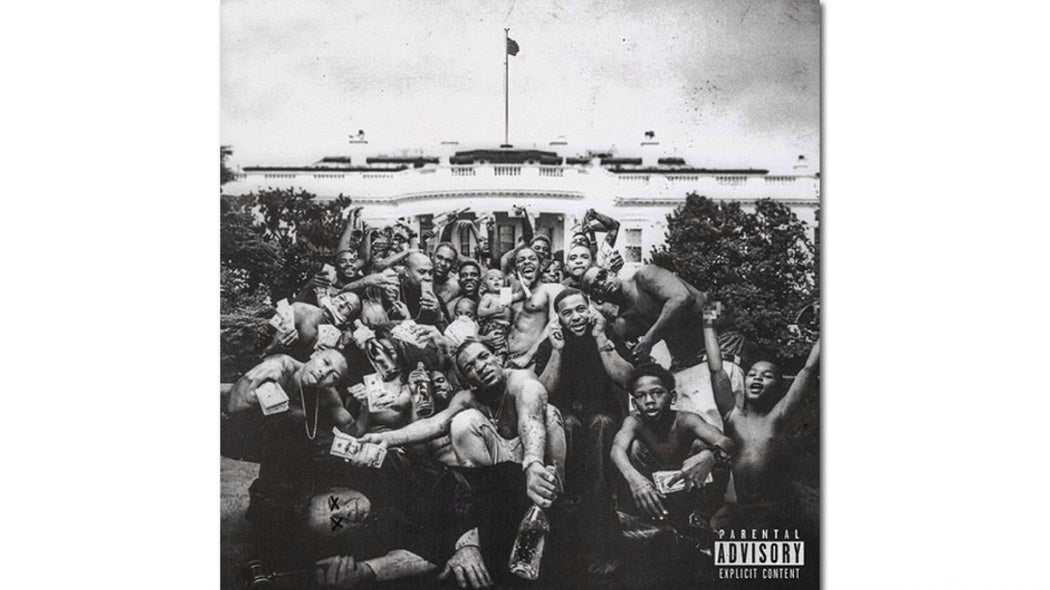New Black Godz is a new column that considers the manner in which racialized social actors navigate complex protracted life options in U.S. and global cities (often through creative manipulation of religious themes and language). New Black Godz explores the lives, legibilities, and “diasporic” tactics of historical figures such as James Baldwin and contemporary artists like Jay Z and Kanye West. We start with a look at mythic themes in Kendrick Lamar’s recent #1 album To Pimp a Butterfly.
***
On March 16, 2015, hip hop artist Kendrick Lamar gave the world To Pimp a Butterfly. His third studio album is conceptually sophisticated, musically rich, and politically pregnant. In a U.S. social environment where New Black Godz grow ever-increasingly more culturally significant than old white gods—To Pimp a Butterfly serves as a kind of post-industrial Pauline Epistle.
Effectively, Kendrick experienced conversion on his road to Damascus on September 13, 2010, visited by the hip hop savior, Tupac Shakur. To Pimp a Butterfly adds to the mythic foundation of those who hold fast to the notion that we might be saved through faith in the flow.
My use of mythic imagery here is not meant to confuse readers, but to situate the stakes involved in something long-spoken about but seldom admitted in the U.S.—that myth of myths of black (in)humanity upon which our democracy is founded—the historical and cultural inability to see and “respect the full humanity of black life.” Buying into the myth of American “democracy” has often meant succumbing to the idea that black folks aren’t fully human, either alive and 3/5s or dead—hyperlegible, illegible, or not seen at all.
Myths, and the social belief in them, are what make and break assumptions about black humanity. So, artists interested in expressions of blackness in its full complexity often rely on myths to combat other myths. African American poet Etheridge Knight explains the poet’s reliance on myth this way:
I see poets … as singers, as preachers, as prophets. … The things I call poetry—you know—speak about big things in life—death, war, freedom, and birth. These things can only be spoken about in a way that you can feel them. They can only be spoken about in symbols, in myths. … When you are speaking of feelings, you can’t present them in prose, in everyday English; they must be presented through symbols or myths.
If you’ve heard To Pimp A Butterfly in full, you’ll know that Kendrick is visited by a technologically resurrected Tupac. Their topic of conversation—the power of a post-civil rights generation of black youth to demand recognition of their full humanity. Carvell Wallace, writing for Pitchfork, says that “Kendrick’s hip hop…is about him and his complete humanity. It is about the humanity of every other black person whose face is painted on the mural of this wall of sound.”
On “Mortal Man,” Pac warns Kendrick (and listeners) that young black Americans are fed up, tired of just “grabbing things out the stores” and “next time there’s a riot, there’s gonna be bloodshed, for real…it’s gonna be like Nat Turner.” Kendrick tells Pac that all he really has is music, vibrations. To which the savior Pac responds that it’s “the spirit. We ain’t even rapping. We just letting our dead homies tell stories.”
To Pimp a Butterfly is an allegory, the tension and duality of the caterpillar and butterfly serving as a vehicle for Lamar’s presentation of contemporary black life in its complexity, an expression of the nuances of truncated options incubating intense creative beauty and vulnerability. Blackness is whole, blackness is complete, blackness is human.
At the same time Kendrick’s album amounts to the bricks and mortar of a contemporary hip hop mythology, whose scaffolding has existed since at least the death of Tupac Shakur. The affective need for the birth of a social savior, through the rhetorical and social power of words, ideas, myths, embodied and evoked through what elsewhere I have referred to as “aporetic flow,” for many hip hop heads, is transmuted into its realization.
Weekly Newsletter
African American culture and race studies scholar Imani Perry suggests that privileging the creative dimensions of music allows for “deep affirmation of humanity and human potential.” Perhaps, this potential is even found in technological manipulations of not just time and space, but life and death. Black humanity, in America at least, may be a myth, but its reflection reigns eternal.
Pac is here. The stone has been rolled away from Pac’s tomb, and we find it empty. Where is Pac? Is he alive? The question of whether or not Pac cheated death matters so much to so many because so many continue to be cheated by a life framed around early death at the hands of law enforcement thugs as much as neighborhood thugs. Where is Pac? Where else, but alive in the flow, proclaiming the good news of the gospel of black humanity.
New Black Godz like Tupac are calling Lamar and all of us to “follow me” as we carve out space for new and renewed black human expression as expressions of full humanity.







